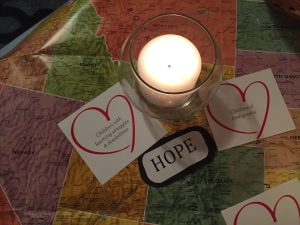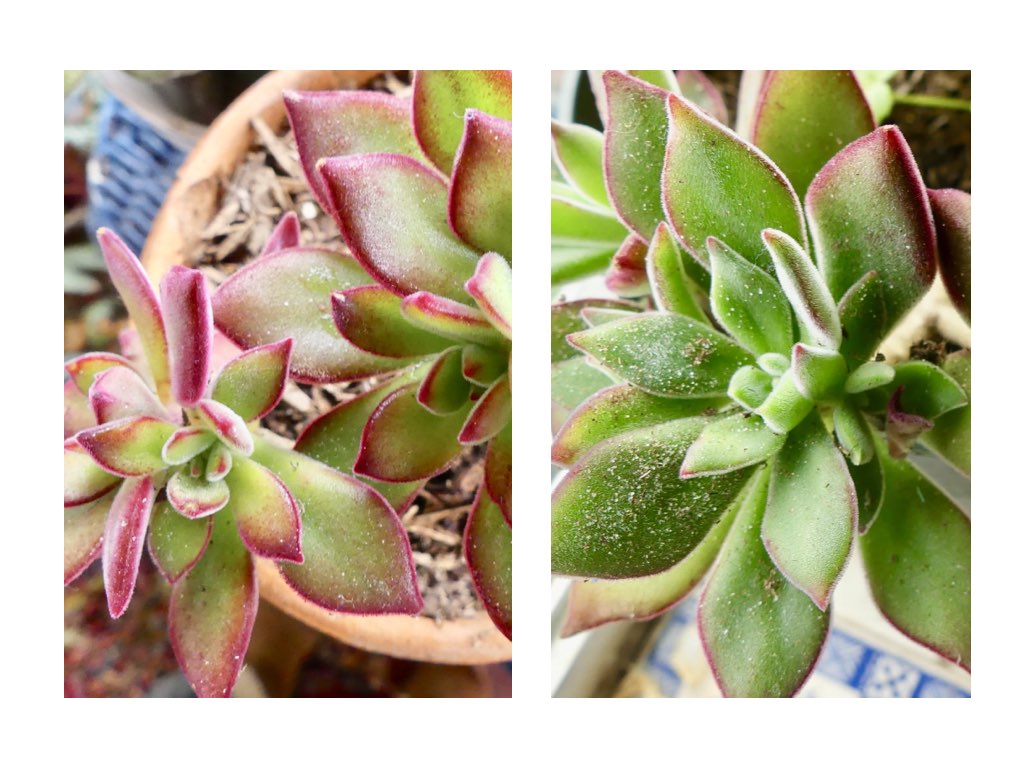by Christine Sine
You are probably sick of me telling you that Lent begins on Valentine’s Day and Easter Sunday is April Fools Day and that we have chosen For Love Of The World God Did Foolish Things” as our Lenten theme. However, I am s strong believer in our need to transform the celebrations of the culture into celebrations of our faith and this seems like a perfect occasion on which do to this so I will not apologize for mentioning it again.
Here is what I am considering doing for Lent that you might like to try or suggest to your congregation.
For Valentines learn about and buy fair trade chocolate
Some of us are conflicted about giving up chocolate this year but as you do bite into that luscious Valentine’s chocolate give more than a thought and a prayer for the people who produced the cacao that it is manufactured from. It is estimated that more than 15,000 child slaves work on cacao farms in West Africa, farms that have also stripped thousands of acres of rainforest. We can make a difference however. Here in Seattle we are privileged to have Theo’s Chocolates, the first Organic and Fair Trade certified chocolate factory in North America. If you live in the Seattle area think of doing a factory tour during Lent to educate yourself. If you don’t, plan a chocolate party with fair traded chocolate products (there are lots of brands out there) and watch The Dark Side of Chocolate,
or watch Chocolat in which a woman opens a chocolate shop in a small French village at the beginning of Lent and shakes up the rigid morality of the village. It is one of my favourite Lenten movies and I love to watch it every year at this time. It is a great foundation for talking about chocolate, and the real meaning of sacrifice during Lent.
What could you do during the season of Lent to make a difference not just in fair trade chocolate but in other areas of inequity too?
Do a Bible study on the “foolish things” God did for us.
Read 1 Corinthians 1: 18-31. Death and crucifixion seems such a foolish thing for God to do to a beloved Son, yet it was the wisest thing that God ever did for humankind. Talk about the foolishness of God in this walk towards Jerusalem and the Cross and how it impacts your life. What other scriptures come to mind when you think of the foolishness of God? Get each person in your small group or congregation to come up with a list of verses that talk about different aspects of God’s foolishness. Talk about each of these and siscuss the implications for your lives.
Talk about all the “foolish” things God has done for us.
The death of Christ by crucifxion was not the only “foolish” thing God has done in the history of the world. It seems foolish to me that he chose a group of runaway slaves as special and chosen people. It seems foolish that Jesus chose a group of fishermen rather than scholars or religious leaders as his disciples. What else comes to mind for you? Discuss the “foolish things” God has done in the history of humankind, and in the history of the church that have unveiled the wisdom of God. How have these impacted your life?
Talk about the foolish things you have done for God.
It is not just that God has done foolish things. God also asks us to do foolish things. In my own life it seemed foolish to leave a successful medical practice in Christchurch New Zealand to join a seemingly derelict ship in Pyraeus Greece. I had the privilege of building a hospital on board this ship, the M/V Anastasis and establishing the medical ministry of what has become Mercy Ships, still impacting the lives of thousands around the world. What are the foolish things you have done that show the wisdom of God?
Think too of the foolish things Christ followers throughout the centuries have done too. St Francis foolishly gave up his wealth to work amongst the poor. St Kevin reputedly stood with his arms outstretched for days because a bird had laid its eggs in his hand. Foolish monks and nuns who ministered to the sick, exposing themselves to contagion and often dying as a result. So many foolish people who have followed Christ and kept the faith alive and vital.
What foolish things might God ask you to do this year? Lent is a great season not just for giving up trivial things, but for helping us and our congregations refresh our faith and refocus our lives. The suggestions above may not appeal to you but I do challenge you to take Lent seriously this year and consider ways to make a difference in your neighbourhood and our world.
For those in the Seattle area don’t forget our Retreat day this coming Saturday.

by Lilly Lewin
I lived in Seattle back in the mid 80’s and again in the early 1990’s. Back then if I talked about Lent people thought it was the stuff in your dryer or in your belly button! Then I moved from the Northwest to Cincinnati and there is a Catholic
Church in every neighborhood so the season of Lent is celebrated with Fish Fries on Friday nights and it’s talked about on the local news. Even the fast food restaurants like Burger King get excited and advertise their fish sandwich specials! Due to the fact that fish is traditionally eaten on Fridays while fasting of meat happens the rest of the week! It just shows how differently we can view the season of Lent.
I said last week in my Freerange post that my view of the Lenten Season is more about falling in love with Jesus for the 40 days of Lent and less about the sack cloth and ashes traditional Lent. My boss in my Cincinnati days, Father Foote, encouraged us to add things to our lives rather than giving up something for Lent. Not adding things in order to do more work, but rather adding things that we’ve been neglecting, adding things that would bring us closer to Jesus during the time between Ash Wednesday and Easter. Things like adding prayer, adding service to others, adding more presence and listening, adding more peace and less stress and worry. Peace instead of stress! That sounds like something most of us would love to add!

add peace subtract stress
add joy subtract whining
add hope subtract fear
add love subtract hate
add kindness subtract contempt
add compassion subtract indifference
add silence subtract busyness
add service subtract tv or netflix
add prayer subtract instagram or Facebook
And speaking of adding PRAYER for Lent this year, my friend Kara Root and I created a new Prayer tool kit launching this weekend called “40 Days Toward Love” which uses Prayer Hearts to pray with each day. You can use this kit for your own devotional time during Lent. Use it with your small group or youth group. AND you can use it with your entire church community. The kit also includes ways to use the Prayer Hearts beyond Lent and ACTION CARDS to help you live out your prayers. You can find it in the Store on freerangeworship.com. We’d planned to have it posted live today but sadly had a technical problem right before it was to go live. Sorry about that.
Guess I am going to subtract perfectionism and performance, and add more grace for myself as I head toward Lent this year. Grace and Peace!
WE HAVE LIFT OFF! ““40 Days Toward Love” is on line and ready for you to download! There is an edition for churches and an edition for personal/smallgroup/family use! The Church Edition has a bonus prayer station and allows you to make copies for your entire congregation! If you need more information, just ask! lillylewin@gmail.com
by Christine Sine.
Here is the last of the 4 part series I am posting on the writing process.
For the entire series, which is a bit of a book in itself!:
Writing a Book – Part 1
Writing a Book – Part 2
Writing a Book – Part 3
Writing a Book – Part 4
Enjoy
Step Seven: Create an outline.
Once you have your topic idea formed, begin outlining the chapters and/or sections of your book. Think from the end of the book first. What do you want your readers to walk away with at the end? Once you have a general idea of how your book will end, create the outline moving toward that end.
Things to consider: Is there a sequence in the learning from start to finish of the book or will each chapter provide an individual lesson that combine together to lead to the final outcome?
- Are there stories you would like to use to highlight the message of each chapter? Sometimes writing the outline stirs your memory of personal stories that will strengthen your book. At other times you might need to get together with friends, colleagues or workshop attendees to solicit their help in gathering stories. When I wrote my first book Tales of a Seasick Doctor about my experiences on board the Mercy Ship Anastasis, I organized a couple of evenings together with colleagues from those days. We shared stories, laughed and cried together over our memories and all left the evenings enriched, renewed and full of faith. Start writing these down as they come to mind. A special notebook or computer file can be helpful for this.
- Are there exercises you would like the reader to participate in at the end of each chapter to reinforce the message of that chapter? Again a special notebook in which you gather these might be useful. Enlist the help of friends or blog and social media followers in both identifying and testing these ideas.
- Would it be good to create a study guide to help people walk through your book? I usually don’t think about this until a book is completed, but it would be much easier to work on a study guide in conjunction with your book draft. Again enlist the help of friends in testing this.
I find that creating a skeletal outline is an easy and quick way to get my ideas on paper as I get started. Start with chapter headings and then ask yourself – what is the main idea I want to communicate in this chapter? Write a sentence or 2 that describes this idea what you want the reader to get out of this chapter. Subtitles in your outline might help you break down the elements you want to convey here. And as I mentioned above all of this will help you know where you need to do more research.
Step Eight: Write, Rewrite and polish.
Getting your initial draft written is incredibly satisfying and very important. It’s a little like erecting the framework for a new house. Once the exterior is framed out, the roof on and windows inserted, you can start working on the more detailed interior work but it does not work to do a little framing and a little finishing work at the same time.
The faster you can get your first draft together the better. So as you write, don’t constantly review and critique your work. Just write. You can always go back through the book many times to re-write and edit if you don’t like something. But it will give you a huge boost to just finish the book and stay committed to the process.
Read writer Anne Lamott’s book on writing, Bird by Bird: Some Instructions on Writing and Life, and you’ll learn the value of crappy first drafts. The most experienced writers have them.
Once you finish the book, set it aside for a few days or a couple of weeks. Distance yourself from the manuscript. Then go back and read over the entire book again, correcting mistakes, rewriting sections as necessary, cutting out wordy parts, and tightening it up. Take out words and passages that aren’t absolutely crucial to the story or message.
Go through this process a couple of times until you feel pretty good about what you’ve written. But don’t get stuck in the editing process. Once you review your masterpiece a couple of times, get your advisory team to read it too. Solicit their feedback, make changes where appropriate and then turn it over to a professional.
Step Nine: Find a professional editor.
Even the most experienced, professional writers use editors. You don’t want a book full of inconsistencies, grammatical errors, and misspellings. You also want to make sure the book flows properly, and that your usage of words is correct. A good editor polishes and refines the book before publication.
The editor checks facts and verifies headings, statistics, data in graphs, and footnote entries. For fiction, the editor will check for consistency and logic, and will read with the needs of the audience in mind. Start by finding out what kind of editing help your publisher provides.
Don’t skimp on editing your book. Don’t recruit a friend or an inexperienced college student. If you are self publishing or working with a publisher that provides little editorial help, you’ll have to pay for a good editor, but you want to make sure you are releasing a professional work. If your book is filled with errors and inconsistencies, you’ll get bad reviews and people won’t buy the book. Also it will damage your credibility as a writer.
Step Ten: Publish and Market it!
Get your book out there as quickly as possible. If you plan to contact publishing houses it is best to begin as soon as possible in the process. They will want to see a proposal which will include information on audience, research you have done, an outline and sample chapters. They will also want to know what platform you already have that will enable you to market this book.
You may like to try and find an agent. Otherwise look at who published other books on similar topics to yours and send an email of enquiry. If you plan to self publish experiment with the templates on createspace.com or similar site or contact one of the organizations that helps walk an author through the process of self publishing.
With every book you write and publish, you’ll learn more and become a better writer. You’ll be inspired by other writers as you research and read more about writing and publishing. Everyone has to be a beginner in the beginning, but the more you write, the more of an expert you’ll become.
by Christine Sine
Yesterday I sent the first draft of my manuscript off to the publisher. Did a happy dance and now have my fingers crossed now that they like it. The photo above gives an idea of how I feel today and I am off to have some fun.
It reminded me though that I needed to get the last few posts on writing a book up for those that are interested (and it seems to be quite a few of you). So before I head off for the day here is post #3…..
Step Six: Create an enjoyable process for writing.
- Create a fun way to record your ideas and developing thoughts. I write fairly organically and have found that my blog is a great way to gather thoughts and ideas for future writing projects. When I start on a new project I begin by gathering all the blog posts that I think are relevant. It is fun to look back over these, see the ways that God has inspired me in the past and allow the Holy Spirit to use these to develop an outline.
- Keep a notebook with you. When I am working on a writing project I may not write for more than a few hours a day but I live and breathe my project. Ideas come to me in the middle of the night, when I am walking or talking to friends. I find it helps to carry a notebook with me to record these ideas, otherwise I end up with a motley pile of notes written on envelopes, note cards and scrap pieces of paper. I have also used the note app on my phone but that is not as appealing to me.
- Create a fun exercise to begin your writing time. Know what stirs your imagination and inspires you to write effectively. Consider beginning each writing session with a short 3-5 minute meditation exercise that stir your creativity and help you focus. Doodling, meditation, coloring and writing in longhand are some of the tools you might like to experiment with. For my upcoming writing project I have started a special journal providing myself with opportunities to colour lettering, create pictures, highlight important ideas and images that impact and inspire me, as well as providing a place for me to develop new thoughts as I write and imagine.
Walking finger labyrinths can also be helpful when you have questions you need answers to or thoughts that have not gelled properly. Start with a deep breath and your finger or stylus raised ready to begin the path. Ask your question or imagine your idea. “Walk” into the centre. Re-ask the question or reimagine the idea then walk out again. It is surprising how often this stirs our brains to respond with solutions.
My friend Kim Balke, who is an expressive arts therapist suggested another intriguing exercise that is also highly effective to stir imagination in a writing project. Here is how she explained it to me:
From my point of view as one who works with children most of the time, I wanted to suggest another exercise to help free your soul based on Jesus’ words, “Unless we become as children we cannot enter the kingdom of God “(the most creative dimension I know of!). Here it is: take some time to enjoy a few picture books for children, some from your earliest childhood memories, some contemporary. They may help foster a heart posture of openness, curiosity and wonder. Here are my suggestions:
Visiting Feelings, by Lauren Rubenstein
I Dreamt, A book about Hope, by Gabriela Olmos
Maybe Something Beautiful: How Art Transformed A neighborhood, by F. Isabel Campoy
The Night Gardener, by The Fan Brothers
Daniel Finds a Poem, by Micha Archer
What Do you do with and Idea? by Kobi Yamada
Always Remember, by Cece Meng (about grief,loss)
My Blue Is Happy ( I forget the author)
Dreamboats (I forget the author)
After reading a story, respond with a doodle, drawing, poem or even keep a few rhythm instruments handy and discover the sounds that hold something that stood out for you in the story…a page of illustration you are drawn to, perhaps.
- Use software you are familiar and comfortable with. I have a Mac computer and like using the Pages word processing software on it. I have also recently started using Skrivener, a shareware software that helps organize files. It is a great tool for drawing together your research into one place. Pinterest is another useful tool for this. As I research on the web I paste links into Pinterest so that I can easily find them again.
- Use software that allows you to edit easily and make changes without wasting a lot of time. Both pages and scrivener help with this. Also, you’ll eventually want to send your manuscript to be edited and formatted, and it’s much easier and less expensive if you’re able to send it in a format your editor can easily edit.
- Reward yourself when you are done. Fun time, down time, self care time are essential. What are some fun activities that you could incorporate into your daily schedule as a reward for the good work you have accomplished? These could be anything from time in the garden to playing with your kids or going for a walk. Rewarding ourselves for what we have accomplished is an excellent way to keep the energy and enthusiasm alive for your project. I find that these fun times often provide creative inspiration for the next stage of my writing project too.
Different people have different writing styles. I find that writing for 2-3 hours in a morning works well for me. I then need a break, a walk and a change of pace. I also like to limit my writing to 3 mornings a week. I might schedule other project related activities like meetings with advisors or practitioners on another morning however. I also find that reviewing blog posts I have written over the last few months or years can help my writing. Sometimes I even cut and paste blog posts into my draft and then adapt them to fit in with the rest of my writing.
My husband likes to work in much larger blocks and can even sit for up to 10 hours in a day for several days in a row. He intersperses meetings and phone calls to collaborators in with his writing. He also does a huge amount of research for any book project, ripping and tearing from newspapers, collecting web articles and reading books that are relevant.
If this is your first writing project, start small with a goal of writing 200 words each day for the first week. Then increase the number of words until you reach 1000-1500 words a day. If you are an experienced writer you probably already know how many words a day are comfortable for you. Make that your goal and stick to it.
This is part of a 4 part series.
Writing a Book – Part 1
Writing a Book – Part 2
Writing a Book – Part 3
Writing a Book – Part 4
Ash Wednesday is just over two weeks away and it is time to think seriously about what you will do to refocus your faith during the season of Lent.
by Christine Sine
Last week I purchased a couple of grow lamps for my increasingly spindly and anaemic looking succulents. I am amazed at the change in them in just a few days. Their spindly stems are still the same, but green leaves have turned red and gold and pink. They are drinking in the light and finally flaming with the richness of their true colours. How sad that it took me so long to notice how deprived they were.
I am the light of the world. If you follow me, you won’t have to walk in darkness, because you will have the light that leads to life. (John 8:12 NLT)
These words of Jesus to his disciples ring through my mind as I look at my succulents today. I wonder how often I too am deprived of my true colours and of the fullness of life God intends for me because I step away from the light of Christ and don’t even notice it.
 What keeps us in the light of Christ?
What keeps us in the light of Christ?
The natural response to this question is: reading the scriptures and praying. And of course that is right. We all need the disciplines of scripture study and prayer to nourish us and fill us with the light of Christ. However I wonder if there is more to it than that. Walking in the light of Christ is not just about getting the right information from the scriptures, it is about applying it too.
You might say my succulents had all the information they needed to thrive. They looked healthy, they were growing vigourously, but they were still light deprived. Their colours were dull and uninteresting compared to the vibrancy they were meant to have.
What amazed me is how quickly their colours revived. The reds and golds and pinks were still their, waiting for the light to reveal them. Perhaps I am stretching the analogy a little here, but it seems to me that their colours are like a light hidden away.
No one lights a lamp and then puts it under a basket. Instead, a lamp is placed on a stand, where it gives light to everyone in the house. In the same way, let your good deeds shine out for all to see, so that everyone will praise your heavenly Father. (Matthew 5:15,16 NLT)
How often I wonder do we seem to be growing and think we are healthy yet we lack the vibrant colours God has woven into our being? And perhaps the vibrancy of our colours needs us to shine with good deeds in order to be fully revealed.
Are your colours dull and uninteresting because you have not applied the light that God shines on you? What are the good deeds God is asking you to perform so that your true colours can emerge and those around you will praise God as a result.
The Season of Lent begins on Valentine’s Day, February 14th this year. This is rather humorous since the tradition of Lent has a fasting component and often involves giving up things like desserts, sweets, and chocolate! I agree with Father Ed Hays that giving up chocolate just makes people angry and mean and really doesn’t bring anyone closer to Jesus. It was Father Hays who introduced me to the concept of using the 40 days of Lent to fall more in love with Jesus rather than the sack cloth and ashes stereotype or tradition of Lent.
What if we chose to spend the 40 days of Lent falling more in love with Jesus? What would that look like?
When we fall in love with someone we often get a little crazy and we do things to show just how much we love the other person. My first real boy friend was in 8th grade. I went to an all girls school in town and he went to the all boys school. We met at church and were in youth group together. I was smitten! And since I am an artist, I expressed my love for him with a hand crafted Valentine. I took a piece of cardboard and collaged it with words and phrases and pictures cut out of magazines glued on to a piece of card board. I even used my mom’s “pinking shears” to cut out the heart and give it a special edging. And since i was too young to drive, I had to get my dad to drive me across town to the boy’s house to give him this created treasure! I’m not sure he really appreciated the time and effort but for me it was an act of love to create something special. My husband expresses his love to me through amazing meals and fun cards. I have friends who write songs for one another. I know friends who go on hikes together and even take retreats to plan together and reflect on their lives. There are just as many ways to express love to someone as there are people!
Consider how you express love and how you experience love yourself. How have you shown someone you loved them in the past? How do you show some one you love them now? How do you show love to your friends? Your family? Your co workers or teammates? How do you like to experience love? Is it through Time, Gifts, Conversation, Creativity? Something else? Take some time to think about this and make a list.
Years ago, I created a sacred space prayer experience based off Father Ed Hay’s book The Lenten Hobo Honeymoon. Father Hays and I are kindred spirits when it comes to experiencing God and practicing our faith in touchable, tangible, symbolic ways. This book is still my all time favorite Lenten devotional. After hosting this Sacred Space for my church and youth group, I was invited to do something at the near by convent. Since it was still Lent, I didn’t create anything new, I just set up the same Sacred Space and sent nuns on a honeymoon with Jesus!
What if we saw Lent as a honeymoon with Jesus? How could this help you focus your time and Lenten practices?
Like in any relationship, you have to start small. Usually you date awhile before you get married and go on a honeymoon. So since we have a couple of weeks before Valentines Day and the beginning of Lent, let’s start!
Plan a date with Jesus. What do you do? Do you go out for a walk? Do you get out in nature? Do you go out and have coffee and take your journal? Could you find some old magazines and create a collage Valentine with words and phrases and pictures expressing your love to Jesus? or cook dinner for someone who is lonely? Bake some cookies for the neighbors or take flowers to friend who is sick? What will your date with Jesus look like? I’d love to hear about it! Mine definitely will involve chocolate!
As an Amazon Associate, I receive a small amount for purchases made through appropriate links.
Thank you for supporting Godspace in this way.
When referencing or quoting Godspace Light, please be sure to include the Author (Christine Sine unless otherwise noted), the Title of the article or resource, the Source link where appropriate, and ©Godspacelight.com. Thank you!







